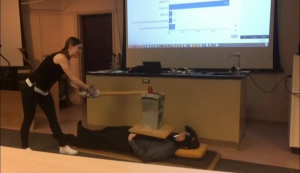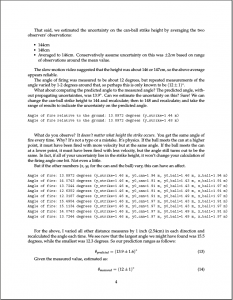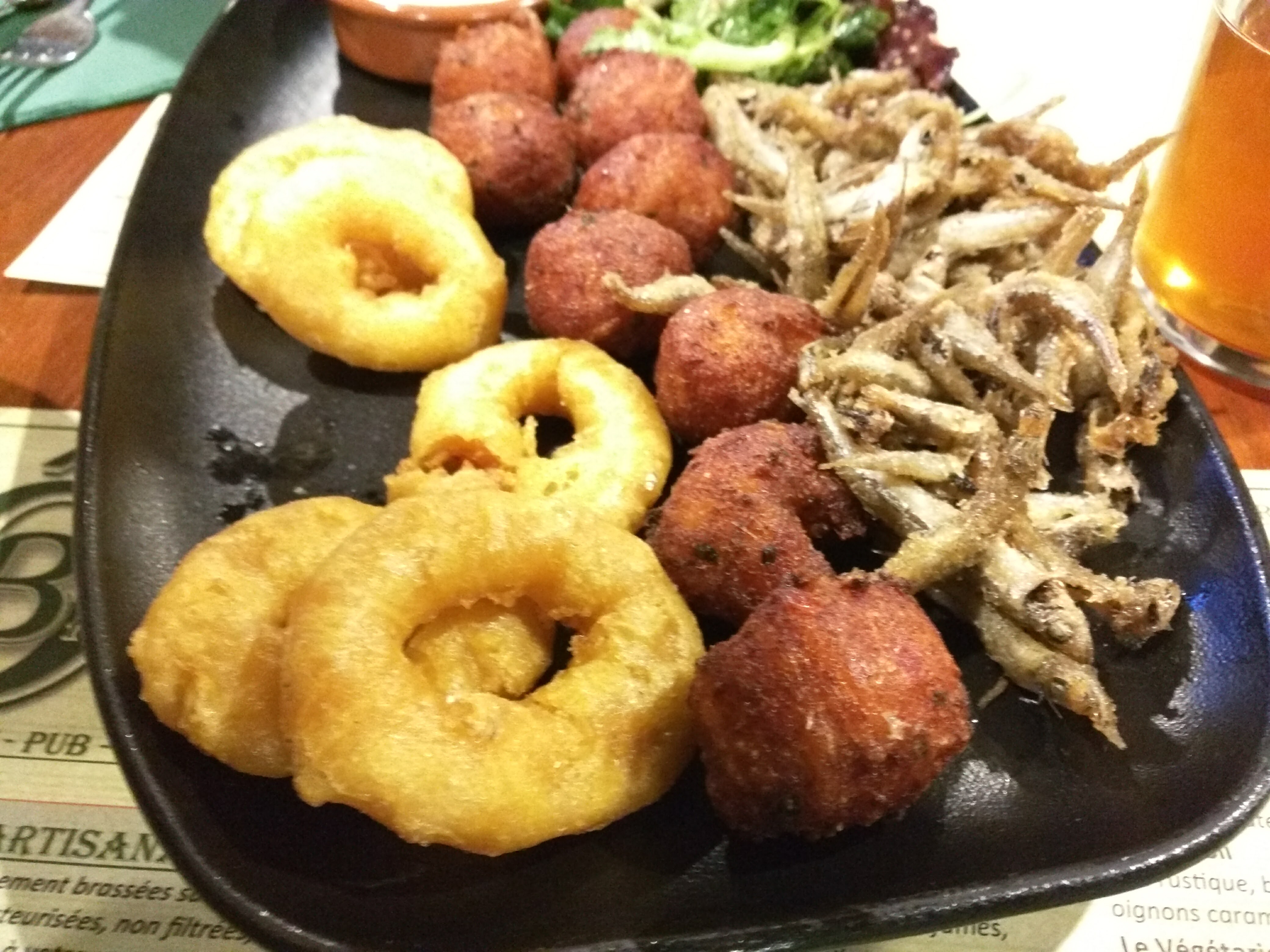
I’ve run silent for months. Why? I had the time and energy for only a finite number of things, and none of them were writing. This semester hit like a freight train. In addition to trying to maintain something resembling a home life, there was a fragmented faculty life with about 2-3 department-level things going on all at the same time. In addition, there was something very precious to me on the research side: my involvement in ATLAS trigger system operations, one of a small number of people coordinating operations for collecting physics signatures from the new data this year. But the elephant in the room was my course. This semester, I was the instructor for the largest course I have ever taught (while also simultaneously being a course I have never taught before): Physics 1303, “Introductory Mechanics”. In addition, I was instructing the Honors Physics course. In this post, I want to reflect on what it was like to teach first-semester undergraduate physics (PHYS 1303) for the first time. It raised both opportunities and challenges, and it might be useful to another professor facing the same situation to talk a little about all of this.
Flip It
I discussed this in an earlier post in this blog, but for many classes I am a firm believer (based on the overall evidence about student outcomes but also instructor experience) in flipping the classroom.
A tradition classroom model in physics is this: a sage lectures, and the students write down what the sage says and occasionally ask questions. I have come to think of this as the “wading pool model” of teaching physics: it’s very safe for all involved (a natural barrier is established between the sage and the audience, which can discourage students and instructors from engaging with one another in class), it provides all the trappings of being in a real swimming pool (there is a sage, a group of people who need the class for one reason or another, and subject material in scientific discipline), and it’s extremely boring for both the instructor and the audience. Information is transferred, but inefficiently. It also fails to model how actual research works. The instructor gives the same speeches every time, at the same time, every semester. Little changes. The students dutifully write down what the sage says, while desperately trying not to fall asleep. No effort of thought is required. The instructor repeats a performance. The students convert words and diagrams into words and diagrams in a different medium. You can easily convince yourself you are teaching, when you are really doing little of the sort.
Flipping the classroom is really more like tossing students into the deep end of a real swimming pool. Sure, you outfit them with swimmies and a life vest first. But the truth of the matter is that flipping the classroom follows from the experience that immersing a person in a practice is the best way to transfer knowledge of the practice. One can read endless manuals about cooking or repairing a car, but the best possible way to learn these things is to burn a cake or start an oil leak. “Failure, the greatest teacher is,” says Master Yoda in the latest Star Wars film, “The Last Jedi”. Amen to that, Master Yoda.
The “swimmies and a life vest” are the reading and lecture videos the students are expected to watch before class. I don’t like using other people’s videos, mainly because I have to learn the subject myself sometimes and crafting a lecture video about the subject is, for me, an excellent way to practice the material itself. The lecture videos are just as much for me as the students. Not watching them is something they choose to do, but it’s at their peril. I approach things differently than the textbook, sometimes, and that’s important; our department might change textbooks at some point, but the videos try to be agnostic while providing their own unique information external to any one textbook.
Students come to class having been exposed to concepts and maybe even some problem-solving notions, but with zero experience (assumed) about actual problem solving. When they get to class, I poll them on the pre-class preparation and then get them to work on problem solving. Do I expect them to be able to solve the problems? Hell no. Just like I don’t expect my graduate students to be able to reconstruct a proton-proton collision to save their own lives, I expect undergraduates to doubt, and struggle, and be frustrated, and perhaps even be a little angry at how I am running the class. But the struggle begins the learning process. It opens up something inside a person to have to work, to have to fight, to have to think. The flipped classroom is that moment when you hit the water and start splashing, thinking to yourself, “What the hell just happened and how do I get to the shallow end again?”
Making the Lecture Videos
I used some nice tools to make the lecture videos. I shot video of me speaking and demonstrating things, like measurements or physical phenomena. Some of those videos needed slow motion, so I used my iPad Air 2 for a lot of that and then, later, switched to using my Google Pixel 2 phone as it provided a far better model for retrieving slow-motion video into my open-source video editing tools. I used Kdenlive, the open-source video editor, to craft each lecture video. I tried to stay ahead of the course but for the better part of the semester, I was getting videos up on YouTube within just 12 hours of needing to assign them to students.
The good news is that, apart from some minor edits to remove small errors from the videos, I never have to shoot them again! They’re done. This might have been a major headache, but I learned a lot about the physics concepts in crafting them and, most importantly, I created something that outlasts this semester. I can just use them again next semester, with almost no changes.
Slides and In-Class Problems
The slides for the lecture videos and my in-class needs were created using the LaTeX typesetting language, specifically the Beamer framework. What was particularly amazing about doing slides this way was the ability to program formulas into my slides and then draw them, via the TikZ graphical package, into useful diagrams. For instance, in a few minutes I coded up the projectile motion equations and was drawing parabolic curves for actual physical situations, with the results being drawn on actual coordinate axes. It was an amazing asset for a physics class.

My most precious tool was Project Jupyter. I created Jupyter Notebooks to hold things like definitions of units (e.g. “_m” was the default unit for distance, with “_ft” being then defined in terms of meters so that a number, written like “x=10*_ft”, was immediately converted to MKS units!); to define functions for nicely outputting LaTeX-formatted numerical results; and to define code for computing the results of mathematical exercises that were then printed directly and automatically into Markdown and LaTeX text for printing and distribution to the students.
In-class problems had accompanying solutions that looked as if they were made entirely in LaTeX, but if I want to change a number next semester the solutions will automatically update with the new computations without me having to enter any new text into the Markdown portions of the Jupyter Notebook. That was VERY satisfying.
Class Time
Class time was not spent lecturing. It was spent doing a quiz, reviewing the quiz to assess where concepts had not been well-absorbed, and then reinforcing concepts via problem solving exercises. Once a problem was assigned, students had about 5-10 minutes to work alone and quietly with their notes and textbook, trying things to answer the questions. I would then poll them to see where they stood (“I don’t know how to solve this problem” was a viable answer on the poll). Then students would group up and work together. I would circulate and offer nudges and help to them. It turned a class of 106 into small groups of 3-4 with total access to the professor for about 60 minutes of class time.
Not all students would participate in the problem solving exercises. As I circulated, I was aware of students doing other things: social media, assignments for other classes, etc. I’m not the police, nor am I their parent. If they choose to forego the opportunity to work with peers and instead sleep in class or do other work, that’s up to them. I open the door, but they have to walk through. I can’t force them. However, the evidence this (and every other) semester was that students that took this process seriously did FAR better than those that did not. Of course, that’s correlation and not causation; there might be another cause that explains the correlation, but the correlation nonetheless exists. Students that tried the problems in-class, asked for help, engaged with their peers and either with me or a teaching assistant, vastly out-performed their peers.
This was never more evident than in the second half of the class, when about half my enrolled population slowly stopped coming to class. They still took the quiz (it was electronic), but they stopped coming to class. I know this because I knew all my students, and I can count. They cannot fool me… at least, not all the time. It was easy to see at the end of the semester that there were 92 enrolled students remaining, but only about 45-50 in class. For those students who were not physically in class, most of them did not fare well at the end of the course when final grades were tallied.
Class time is their time. They can choose to use it or not. But choices have consequences, and not because I do anything; because they skip the learning process while thinking they can still learn.
Engaged Students
The most rewarding part of any semester are the engaged students. These are the students who become unafraid to challenge me in class, to flag me down when they are confused, to dig deeper into concepts and wrestle with applying ideas to solve problems. These are the students who care enough to shoot videos of demonstrations in class and post them as memes in Snapchat or in GroupMe. Not every engaged student is an A student, but every engaged student is a student I care about because they also care. We’re all human, and humans are social creatures. When there is a two-way exchange in a class, everybody feels it.
I had a regular group of about 20 students I saw during my two, 90-minute office hours each week. They brightened my week. Sure, they were stressed about homework problems, but they asked good questions, they worked together in small groups during office hours, and they learned. What more can an instructor hope for?
Then there was the audience/faculty interaction. There was my one student who had regular catch phrases and emotional reactions to things I said in class that made class-time feel more, at times, like a seminar on the power of positive thinking or some kind of rock concert, talk show, or revival. That energizes me, and students take note when other students are resonating with the instructor. There were my students who, during quite dramatic demonstrations (like the bed of nails or the bowling ball pendulum), cried out in excitement or awe or shock when they saw things happen that didn’t meet expectations. This only fuels me as an instructor. If it’s fun for them, it’s doubly fun for me.
There were my students creating memes based on things from class. There was the time I was in the Eastern time zone for the American Physics Society meeting and announced the quiz an hour too early. “Understanding Time Zones,” one student photo-shopped over the cover of a book in a photo I had posted earlier on Twitter. They wouldn’t kid if they didn’t care (one way or another). Many of my students cared deeply about this course. I cared deeply about this course. This situation works for me.
Then there was the applause. This happened enough this semester that at least one colleague remarked on it several times. “The applause went on for a long time,” they said to me one day. I don’t know how to respond to that. I don’t have an ego about it. I want my students to feel the same excitement I feel for physics. So… I guess… mission accomplished. That’s just how I feel about it. But I have to do that every semester, and I understand that is the commitment I am making here. It’s not just about these students. It’s about all students I will ever work with in class. It’s for all the students yet to be in my class. I have to bring that feeling to every group I work with.
Lessons Learned
I keep a jar on the lectern during class. It’s not for tips. It’s for self-punishment. “Dr. Sekula’s Failure Jar” it reads on a hand-written label. Whenever I make a mistake in class – mess up a student’s name, make a mistake in a problem I have assigned them, etc. – I put a dollar in the jar. When I have enough dollars, I buy them all food. I bought them food twice this semester. It’s not that I don’t know physics. It’s that I am human, just like my students. I make mistakes. They make mistakes. I admit mine in real-time and learn from them. I hope to be a model for them, for if a seasoned scientist can admit when they make mistakes, why can’t they?
Here are some mistakes I will work to amend, course-wide, for next semester:
- The polling system I tried this semester had some limitations. I’ll be switching that up next semester. For instance, the current system would not take answers from incomplete student quizzes and submit them automatically. It would just claim the student wasn’t in class, which wasn’t always the case and is a silly default (that cannot be overridden).
- Quizzes don’t need to happen in class. But the results of a quiz need to be known by the beginning of class. I’ll take attendance a different way next semester and instead quiz outside and before class.
- I didn’t use enough of class time to show them examples of how to apply ideas and setup and solve problems. I did that when I taught electricity and magnetism to pre-meds; I plan to incorporate that in the fall.
But all of that is window-dressing. The hard work of creating this course is done. I can focus on making it better, rather than making it from scratch. That is a much better place to be as a teacher.
Mockumentary
Combining a fake video interview with outtakes from the lecture videos and in-class videos and memes provided by students, my last video project of the semester was this fake documentary about the making of the course. I had fun making this course, and I had a lot of embarrassment to vent at the end of it all to set the cosmos right once more…



